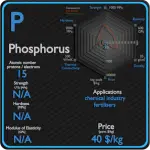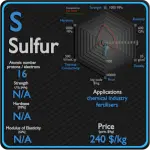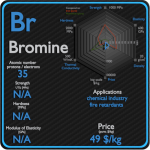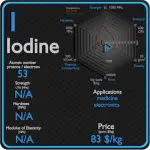This article contains comparison of key thermal and atomic properties of potassium and bromine, two comparable chemical elements from the periodic table. It also contains basic descriptions and applications of both elements. Potassium vs Bromine.
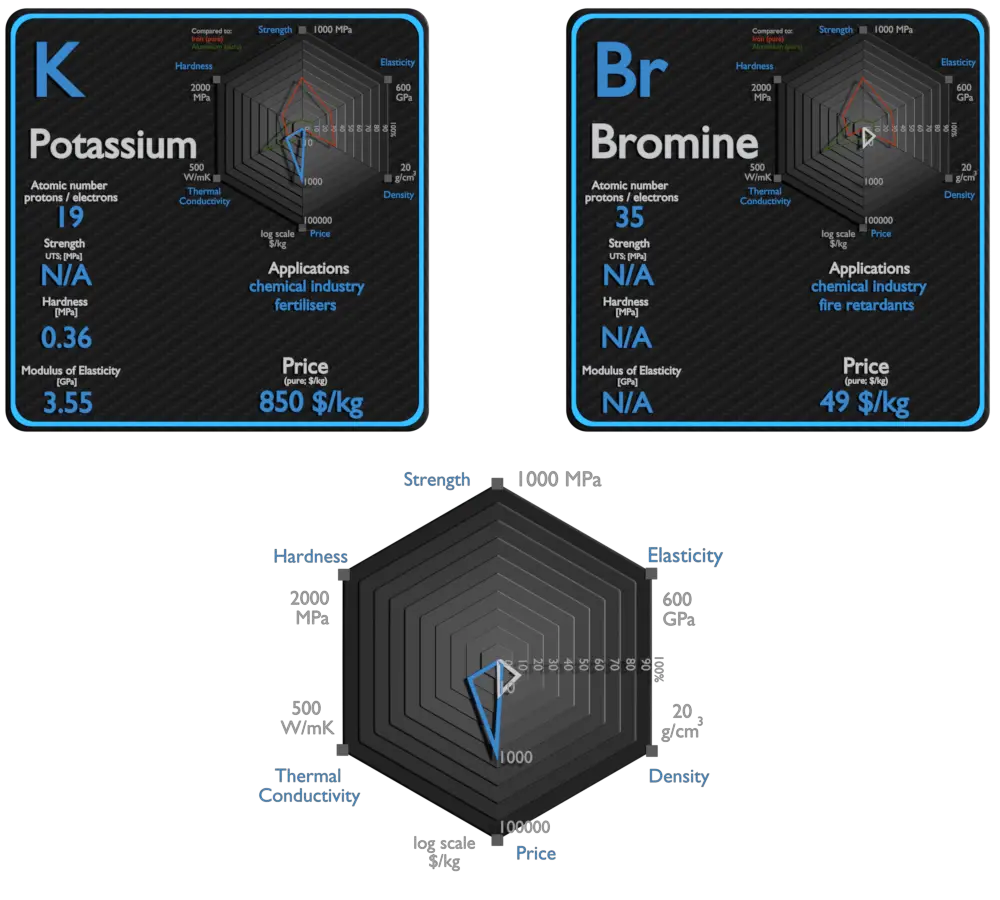
Potassium and Bromine – About Elements
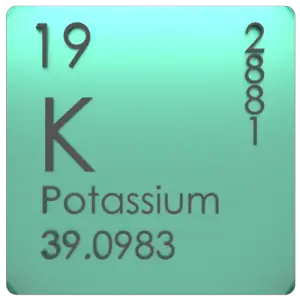
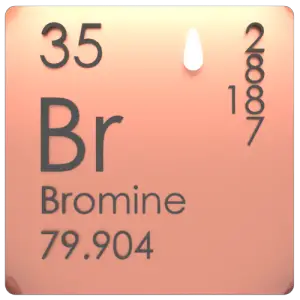
Source: www.luciteria.com
Potassium and Bromine – Applications
Potassium
Potassium (K) is an essential nutrient for plant growth. It’s classified as a macronutrient because plants take up large quantities of K during their life cycle. Agricultural fertilizers consume 95% of global potassium chemical production, and about 90% of this potassium is supplied as KCl. Due to its high degree of reactivity, pure potassium is rarely used in its elemental /metallic form. It is used as a powerful reducing agent in organic chemistry. Potassium/Sodium alloys are It used as a heat exchange medium . The heat in the potassium warms water and makes it hot enough to boil. Then water is changed into steam, which is used to work devices that generate electricity.
Bromine
A wide variety of organobromine compounds are used in industry. Some are prepared from bromine and others are prepared from hydrogen bromide, which is obtained by burning hydrogen in bromine. Brominated flame retardants represent a commodity of growing importance, and make up the largest commercial use of bromine. One of the major uses of bromine is a water purifier/disinfectant, as an alternative to chlorine. Bromine compounds are effective pesticides, used both as soil fumigants in agriculture, particularly fruit-growing, and as a fumigant to prevent pests from attacking stored grain and other produce.
Potassium and Bromine – Comparison in Table
| Element | Potassium | Bromine |
| Density | 0.856 g/cm3 | 3.12 g/cm3 |
| Ultimate Tensile Strength | N/A | N/A |
| Yield Strength | N/A | N/A |
| Young’s Modulus of Elasticity | 3.53 GPa | N/A |
| Mohs Scale | 0.4 | N/A |
| Brinell Hardness | 0.36 MPa | N/A |
| Vickers Hardness | N/A | N/A |
| Melting Point | 63.25 °C | -7.3 °C |
| Boiling Point | 760 °C | 59 °C |
| Thermal Conductivity | 102.4 W/mK | 0.122 W/mK |
| Thermal Expansion Coefficient | 83 µm/mK | N/A |
| Specific Heat | 0.75 J/g K | 0.473 J/g K |
| Heat of Fusion | 2.334 kJ/mol | 5.286 kJ/mol |
| Heat of Vaporization | 79.87 kJ/mol | 15.438 kJ/mol |





